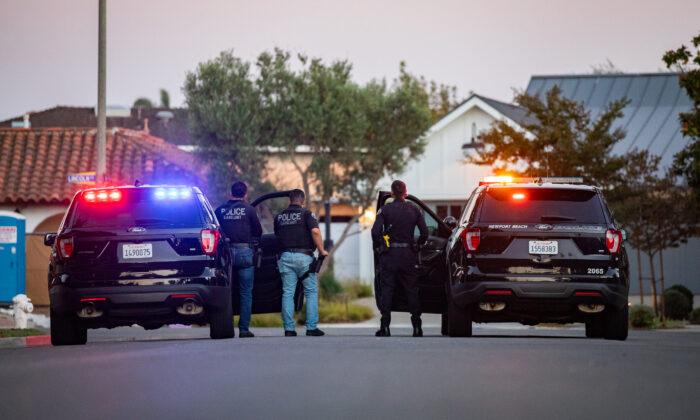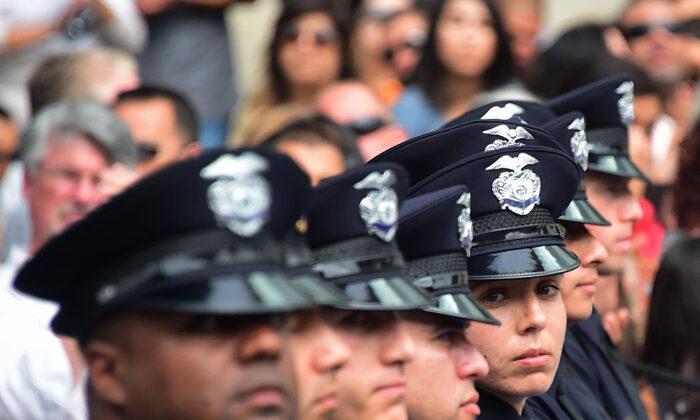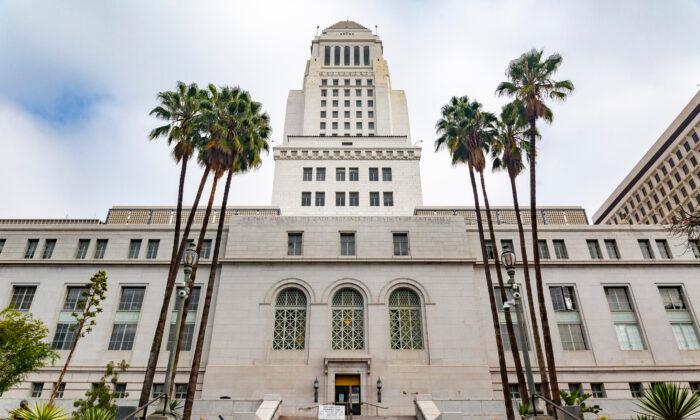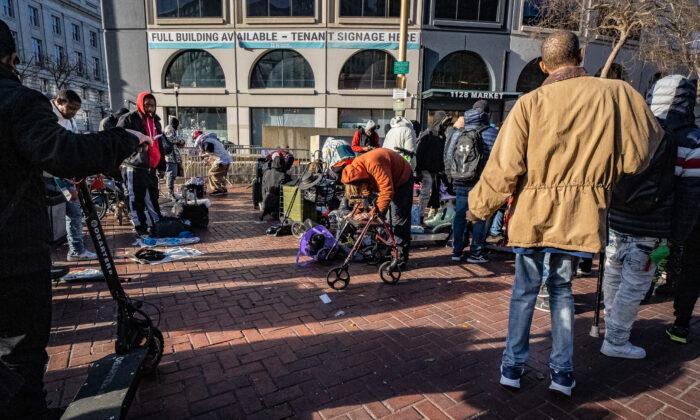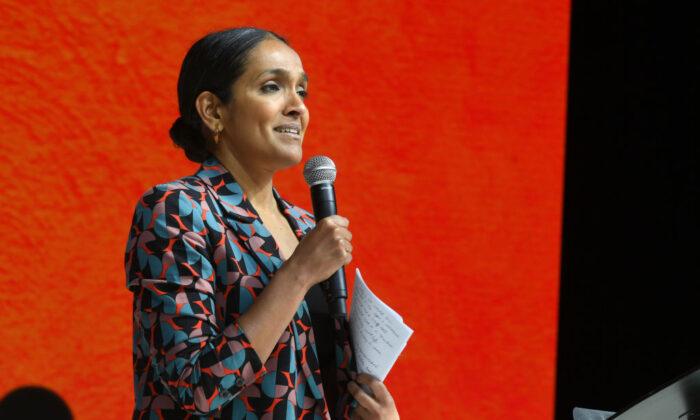LOS ANGELES—Myra Millan, manager of a 7-Eleven in Los Angeles, told The Epoch Times that working at the convenience store has become “scary, because you never know what is going to happen.”
The store, located in the 1800 block of West Olympic Boulevard, was robbed around 1 a.m. on Sept. 13. The Los Angeles Police Department (LAPD) said the suspect “waited in line, walked up to the counter, took out a handgun, and fired one shot over the counter.”
The suspect demanded that employees behind the counter fill a bag with money from the cash register. The suspect fired a second shot over the counter and fled the store on foot with the stolen money.
No injuries were reported, but Millan said it left her and her employees shaken. She said this was the third time the store had been targeted by thieves this year.
“You don’t know what to expect, who to trust and who not to trust,” she said.
The LAPD released security footage of the incident on Sept. 21, asking for the public’s help in finding the suspect.
In January, lifestyle social media influencer Mandy Madden Kelley’s home in the Melrose area of Los Angeles was broken into by an intruder shortly after midnight. She told The Epoch Times at the time that several houses in her neighborhood had been burglarized during the pandemic, too.
“My husband and I felt very scared and unprotected,” Kelley said.
She said that in the 20 minutes it took for the police to arrive, “it was traumatizing to be so helpless.”
Crime Data
In California’s big cities, safety is a top concern. According to LAPD data, which is reported weekly, robberies were up 17 percent the week of Sept. 19, compared to the same period last year.The latest crime statistics for the state as a whole show violent crime is on the rise. According to the attorney general’s office, homicides increased 7.2 percent between 2020 and 2021. Despite the increase, officials insist the overall crime rate is low compared to the state’s historic highs.
The violent crime rate in California—measured by the number of violent crimes per 100,000 people—increased 6.7 percent from 437 two years ago to 466.2 in 2021. This number still falls below California’s record high of 1,103.9 in 1992.
“While crime rates remain significantly below their historical highs, property and violent crimes continue to have devastating consequences for communities across the state,” state Attorney General Rob Bonta said in a statement on Aug. 25.
Shootings, in particular, remain an issue, Bonta said, with three-quarters of all homicides in 2021 involving a firearm.
LAPD Chief Michel Moore noted in the department’s most recent data report that in the city there has also been a “troubling increase” in robberies involving firearms.
“The incidences of officers rolling into or coming upon instances of gun violence has increased,” Moore said on Sept. 20. “We are working with our training personnel to talk about and remind officers of the critical importance of their safety, seeking cover, and ensuring that they recognize that there are many more guns in the streets today than in years past.”
Viral videos on social media show a grim reality of organized retail theft, assault, home invasions, and sprawling homeless encampments in the state’s largest cities.
In a recent report by the National Retail Federation, $94.5 billion in losses were reported, resulting from organized retail crime across the country. The survey noted that the top locations for organized retail crime were Los Angeles, San Francisco/Oakland, New York, Houston, and Miami.
Vern Pierson, El Dorado County’s district attorney, has studied these trends and told The Epoch Times that there’s more behind the data than meets the eye.
“The attorney general puts in their report saying it’s not as high as the numbers for the peak back in the 1990s for homicides, but one of the significant differences that anybody who’s in the criminal justice world should be aware of is that emergency medicine today is tremendously better than it was in 1995 or the mid-'90s,” Pierson said.
A report released in July by Redfin found the state’s highest out-migration rate are residents leaving San Francisco and Los Angeles, citing mainly the high cost of living, but a few have told The Epoch Times in previous interviews that crime also was a factor.
Behind the Numbers
Critics point to several of the state’s criminal justice reform policies that have been passed in recent years—such as Propositions 47 and 57, and zero-cash bail—while those in favor of reform believe the root problem lies in an inequitable environment.Passed by voters in 2014, Proposition 47 reduced the sentencing for theft from a felony to a misdemeanor if the amount stolen doesn’t exceed $950. According to PPIC research, the proposition did have some impact on property crimes in that “it may have contributed to a rise in larceny thefts, which increased by roughly 9 percent (about 135 more thefts per 100,000 residents) compared to other states.”
In 2016, Proposition 57, meanwhile, allowed for early parole for nonviolent criminals. Zero-cash bail, also established in 2020, allows criminals to be let out without bail. Lawmakers believed this would give more opportunity to inmates who couldn’t afford bail.
Under Proposition 57, prosecutors are prohibited from charging juveniles as adults without a judge’s approval. The new law also allowed those convicted as adults for crimes committed as juveniles to appeal their sentences.
“I think we have unintentionally been encouraging a culture to become more violent and more lawless,” Pierson said of the new laws.
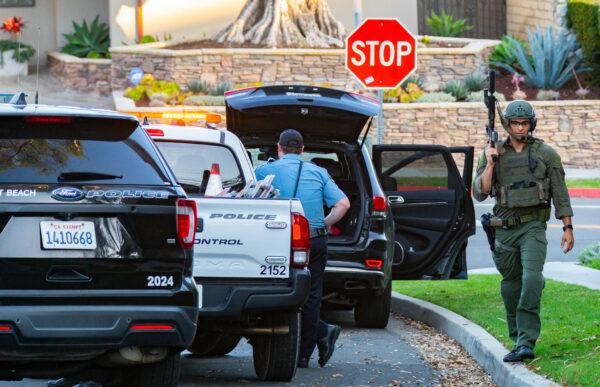
Following the trend of reforming criminal justice, district attorneys in both San Francisco and Los Angeles were elected on a promise to boldly reshape the criminal justice system in their respective cities. Los Angeles County District Attorney George Gascón, elected in December 2020, introduced a series of reforms, including eliminating cash bail, most gun enhancement charges, and the death penalty.
But not all officials agree with the policies. More than 34 cities registered a vote of “no confidence” in Gascón, while Los Angeles Sheriff Alex Villanueva also supported a second failed recall effort against the district attorney this year.
“The public face of their plan is, ‘Oh, we want to reimagine; we’re going to reinvest.‘ They have all these big, flowery ideas. ’Let’s reinvest in the community.‘ ... ’We’re going to go to the root cause of crime, and let’s spend our money there, so we don’t have to pay for the consequences,’” Villanueva told EpochTV’s Siyamak Khorrami. “Well, that’s like offering a person in the desert who was dying of thirst and heat: Let’s plant a tree. [It] does absolutely nothing for that person.”
Villanueva has been a vocal critic of Gascón’s policies and accused his office of “not prosecuting any crimes.”
This lax approach to criminal justice, critics say, is the cause of crime.
While the most recent recall effort against Gascón failed in August, San Francisco District Attorney Chesa Boudin was ousted by voters during the June primaries.
“The recall of Chesa Boudin, this rogue, so-called ‘Progressive DA’ who clearly didn’t embrace his required elected role to actually prosecute—his recall should send a clear message across the nation—that serving as District Attorney yet not holding criminals accountable is a dereliction of duty,” Recall Chesa Boudin spokesperson Richie Greenberg said in a statement on June 7.
The turn to a progressive criminal justice reform strategy was a response to the state’s multi-decade history of mass incarceration stemming from tough-on-crime laws, such as the Three Strikes Sentencing Law, which sentenced third-time violent or serious felony offenders with 25 years to life.
While criminal justice reform advocates argued the law was too harsh, “it worked,” Villanueva said.
The law, which was deemed too arbitrary by critics, locked away numerous nonviolent suspects for life who committed smaller property crimes.
From 1988 to 2011, four state governors considered the tough approach a priority. But in 2011, California took a turn and released tens of thousands of nonviolent and non-sex offender inmates under the Brown v. Plata ruling, which ruled California’s prison systems violated the state’s Eighth Amendment of “cruel and unusual punishment.”
After a long trial, the court ordered the release of enough prisoners for the inmate population to come within 137.5 percent of the prisons’ total design capacity. As a result, between 38,000 and 46,000 inmates were released—many of them suffering from mental health issues or psychotic disorders.
Homelessness
California leads the nation in homelessness.On any given night in the Golden State, there are more than 160,000 people sleeping on the streets. According to the last point-in-time count in Los Angeles last month, there are 41,980 unsheltered homeless people.
In 2020, about 25 percent of Los Angeles County’s homeless population suffered from severe mental illnesses such as schizophrenia or other psychotic disorders and 27 percent had a long-term substance abuse disorder, according to the Los Angeles Housing Services Authority. Chronically homeless individuals were reported to have a higher percentage of being addicted to drugs, suffering from a mental health issue, or both.
According to a June 2021 analysis, homeless-related crimes in the city of Los Angeles—that is, any crime involving either a homeless suspect or victim—made up 11 percent of violent crime in 2018, 13 percent in 2019, and 15 percent in 2020 and 2021.
LAPD data this year showed that 23 percent of homicide victims were categorized as “unhoused.”
Venice resident Deborah Keaton previously spoke to The Epoch Times about a recreational vehicle encampment parked outside her home on Abbott Kinney Boulevard for more than a year. One of the RV dwellers, identified as Brandon Washington, had been arrested several times before. But this didn’t stop him from making threats against Keaton.
“He rang the bell, and he was wasted, and he said to me: ‘I just need to know all the evil people; Is your husband evil? Because I need to kill your husband,’” Keaton told The Epoch Times last November. “It was scary.”
Keaton filed a police report and captured the entire interaction on her doorbell camera.
“There’s no repercussions for these guys, and they can’t be held and they know it. A lot of these guys have been arrested 400 times,” she said.
Neighbors alleged at the time that Washington—who often appeared to be on drugs—had prostituted women in the RVs, in addition to dealing methamphetamine to other homeless people. Keaton said that in the summer, a woman was hiding in her backyard because she claimed that Washington was “pimping her out.”
A Firsthand Perspective
Additionally, LAPD-reported homicides within the first half of 2022 reached a historic high in the past 15 years. In the past two years, data also showed about a third of homicide victims were black men, even though they account for just 4 percent of the Los Angeles population.This month, popular rapper PnB Rock was shot dead during a robbery while eating at a restaurant in Los Angeles. Prior to his death, he appeared on a podcast and said robberies in Los Angeles have become normalized because it’s “so common.”
Stan Muhammed, founder of the Venice-based gang interventionist group HELPER Foundation, told The Epoch Times: “To walk up to somebody and just kill them—it’s become beast-like, almost predatory. There’s no regard for life.”
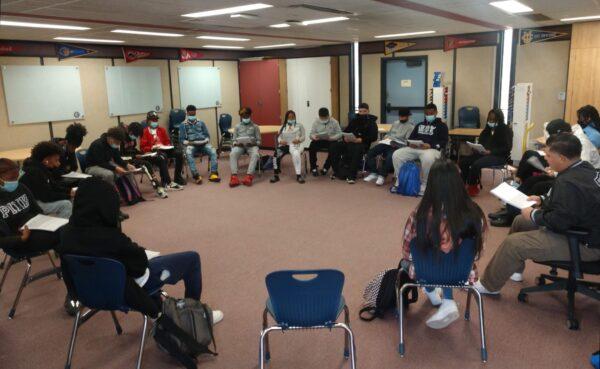
The LAPD reported a 14.9 percent increase in robberies between 2020 and 2021 in the city, with a 3.1 percent uptick so far this year compared to the same period last year.
Muhammed, who was incarcerated in the 1990s for drug possession and gang association, said he’s noticed a stark contrast to today’s criminals due to the kinds of drugs available. He established the HELPER Foundation in 1999 to help young adults prone to gang violence and substance abuse to be productive in their communities through group counseling, leadership training, field trips, mentoring, tutoring, job development, job training, and workshops.
“You take the fathers out, you lock up the leadership. There are all these young people growing up without any leadership,” Muhammed said.
He said in the 1990s, substances such as fentanyl and meth were uncommon compared to today.
“So, a lot of us were not using that type of substance, but nowadays you get fentanyl and all these other drugs that are causing people to really go insane,” he said.
Muhammed said that despite his mother’s efforts to keep him on the right track growing up with a Christian upbringing, he fell “victim to the environment” like so many others in his community who grew up seeing violence in the home. He said there is a lack of resources to aid those in communities of color who grew up around gang violence in Los Angeles because “no one really wants to deal with them.”
“This stuff has been happening for 40 years,” Muhammed said. “It’s a civil war is what it is, but it’s not being called that; it’s called gang violence.”
Although the HELPER Foundation receives partial city funds, the coalition is still small compared to the bigger organizations that receive state funding for outreach services and shelter. He said it’s easier for officials to fund the same groups because “they’ve been in bed with these people for so long.”
“They feel more comfortable dealing with those top organizations because they don’t have to worry about the people with the guns,” Muhammed said. “What we have to deal with is the guy who has murder on his mind.”
